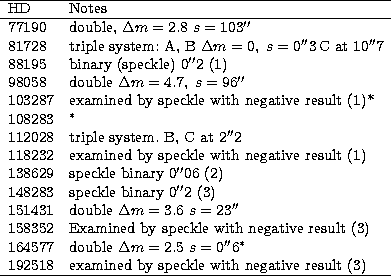 (1) McAlister H.A, Mason B.D., Hartkopf W.I., Shara M.M., 1993, AJ 106, 1639 (2) Hartkopf W.I., McAlister H.A., Franz O.G., 1989, AJ 98, 1014 (3) McAlister H.A., Hartkopf W.I., Hutter D.J., Shara M.M., Franz O.G., 1987, AJ 92, 183. |
 (1) McAlister H.A, Mason B.D., Hartkopf W.I., Shara M.M., 1993, AJ 106, 1639 (2) Hartkopf W.I., McAlister H.A., Franz O.G., 1989, AJ 98, 1014 (3) McAlister H.A., Hartkopf W.I., Hutter D.J., Shara M.M., Franz O.G., 1987, AJ 92, 183. |
Copyright The European Southern Observatory (ESO)